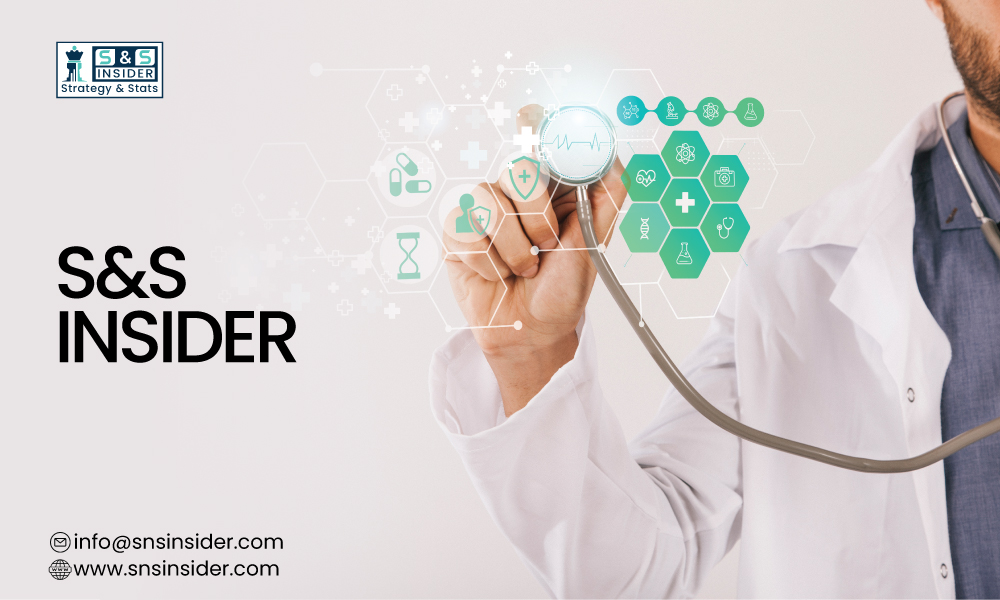The Photoplethysmography (PPG) biosensors market is undergoing a transformative evolution as digital health, wearable technologies, and chronic disease management converge. Valued at USD 459 million in 2023, the PPG biosensors market is projected to reach USD 1190.03 million by 2032, expanding at a CAGR of 11.2% over the forecast period. The exponential growth can be attributed to the rising prevalence of cardiovascular and respiratory conditions, increasing demand for wearable health-monitoring devices, and the shift toward remote healthcare.
Understanding PPG Biosensors
Photoplethysmography (PPG) is a non-invasive optical technique used to detect blood volume changes in the microvascular bed of tissue. PPG biosensors are integral to devices like smartwatches, fitness trackers, and pulse oximeters, enabling the continuous monitoring of physiological parameters such as heart rate, blood pressure, and blood oxygen saturation.
Get Insights into Market Movements: Request a Sample Report! https://www.snsinsider.com/sample-request/6463
Market Dynamics: Drivers, Restraints, and Opportunities
Key Drivers
- Rising Incidence of Cardiovascular and Respiratory Disorders
Globally, heart diseases and respiratory illnesses are on the rise. In the U.S. alone, nearly 47% of adults suffer from hypertension, as per CDC data. This trend is fueling demand for real-time health monitoring, where PPG biosensors play a crucial role.
- Adoption of Wearable Technology
Tech giants such as Apple, Fitbit, and Samsung have made health monitoring more accessible through smartwatches and wristbands embedded with PPG sensors. Consumers are increasingly seeking devices that offer round-the-clock tracking of vitals for fitness and medical purposes.
- Government Support for Telemedicine and Remote Monitoring
Policy initiatives like Medicare expansion for remote monitoring devices in the U.S. have boosted the adoption of PPG-integrated solutions among healthcare providers. Such programs make healthcare more affordable and increase accessibility for patients with chronic conditions.
- Integration with Digital Health Platforms
PPG biosensors are increasingly being linked with electronic health records (EHRs), cloud platforms, and mobile apps, facilitating data analysis and long-term health tracking, enhancing patient outcomes and early diagnosis capabilities.
Key Restraints
- Regulatory Compliance and Data Privacy
PPG-enabled devices must adhere to stringent regulatory approvals from bodies such as the FDA and CE. Additionally, data privacy concerns associated with continuous health tracking remain a barrier for broader adoption.
- Sensor Accuracy and Calibration Issues
External factors such as skin tone, motion artifacts, and ambient light can affect the accuracy of PPG readings. Manufacturers are continuously working to enhance sensor reliability through improved algorithms and sensor fusion technologies.
Key Market Segments
By Product
- Pulse Oximeters
- Wrist Bands
- Smart Watches
- Other Products
Smartwatches and fitness bands currently dominate the consumer segment due to ease of use and multifunctionality. Pulse oximeters hold strong relevance in clinical environments and at-home patient care, particularly post-COVID-19.
By Application
- Heart Rate Monitoring
- Blood Pressure
- Blood-oxygen Saturation
- Other Applications
Heart rate and blood-oxygen saturation monitoring continue to be primary use cases. However, emerging applications include sleep pattern analysis, stress detection, and early arrhythmia diagnosis.
Regional Insights
North America: Leading the Market with 40% Share (2023)
North America emerged as the dominant regional market in 2023, accounting for 40% of the global PPG biosensors market. The U.S. leads the pack, driven by:
- Advanced healthcare infrastructure
- High penetration of wearable devices
- Presence of top players like Apple, Fitbit, and Medtronic
- Favorable government policies for remote patient monitoring
The region’s proactive adoption of digital health solutions and high per capita health spending make it a hotspot for innovation in PPG technology.
Asia-Pacific: Fastest Growing Region
Asia-Pacific is anticipated to record the highest CAGR during 2024–2032, fueled by:
- Rapidly increasing healthcare expenditure
- Rising awareness of preventive healthcare
- Expanding middle class and disposable income
- Government-led initiatives for digital health transformation
Countries like India and China are witnessing a boom in wearable tech adoption, driven by their large populations and growing health-conscious consumer base. Local companies and startups are also entering the market with affordable PPG-enabled products tailored to regional needs.
Key Companies Driving Innovation
The market is moderately fragmented with a mix of tech giants and niche sensor developers. Prominent players include:
- Maxim Integrated (Analog Devices, Inc.)
- Texas Instruments Incorporated
- ams-OSRAM AG
- Murata Manufacturing Co., Ltd.
- LITE-ON Technology Corporation
- Viatom Technology Co., Ltd.
- Shimmer Sensing
- Biosensics LLC
- Protonic Medical Systems
- Medtronic plc
These companies are focusing on miniaturization, low power consumption, AI integration, and multi-parameter tracking to stay competitive in a rapidly evolving market.
Challenges and Opportunities Ahead
Challenges
- Maintaining regulatory compliance in global markets with varying standards.
- Improving sensor precision for diverse populations and use cases.
- Ensuring cybersecurity and data privacy in connected health devices.
Opportunities
- Leveraging AI and machine learning to enhance predictive analytics in remote care.
- Expanding into emerging markets with low-cost yet effective devices.
- Collaborating with healthcare systems and insurance companies for wide-scale deployment.
Conclusion
The PPG biosensors market is not just a technological trend; it represents a paradigm shift in how healthcare is delivered, especially in the realms of preventive care, chronic disease management, and personalized medicine. With increasing global demand for real-time health monitoring and wearable technologies, PPG biosensors are poised to become a cornerstone of digital health infrastructure.
From heart rate and blood oxygen tracking to full-fledged integration into clinical decision-making tools, the applications are broadening every year. As the market scales past USD 1.19 billion by 2032, the focus will remain on accuracy, affordability, and interoperability—ensuring that PPG biosensors reach their full potential in enhancing global health outcomes.
